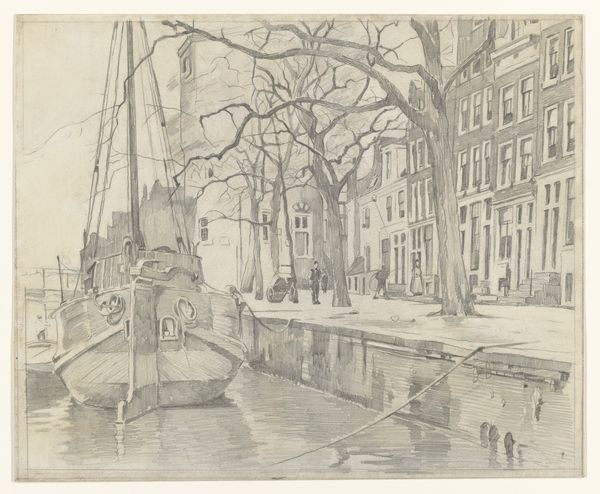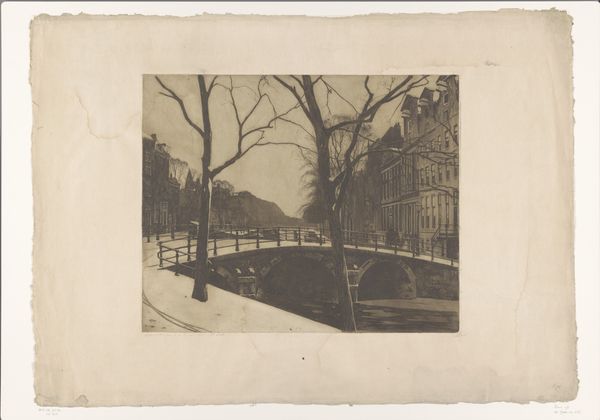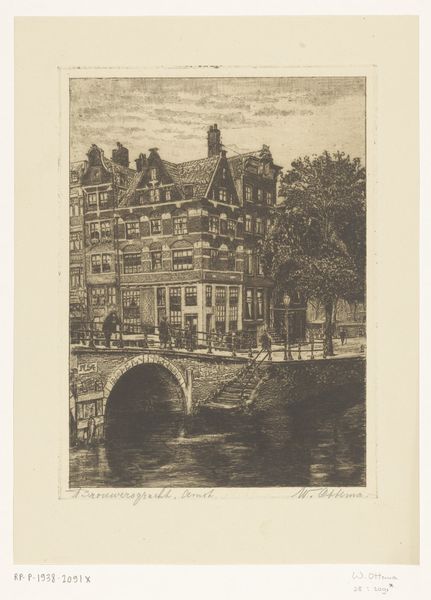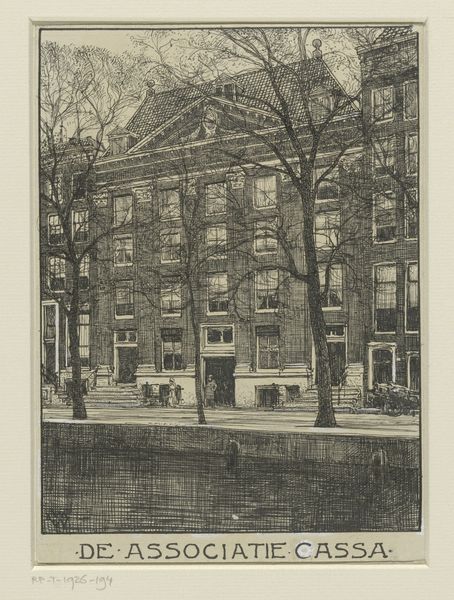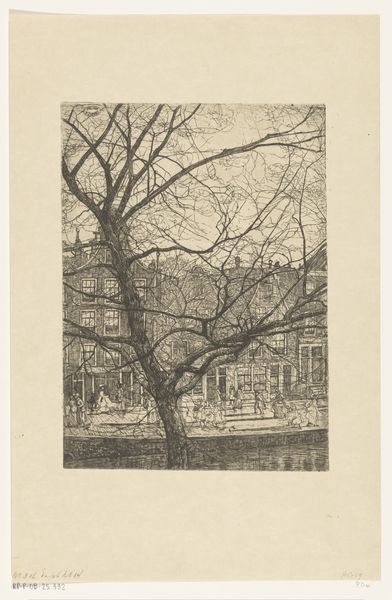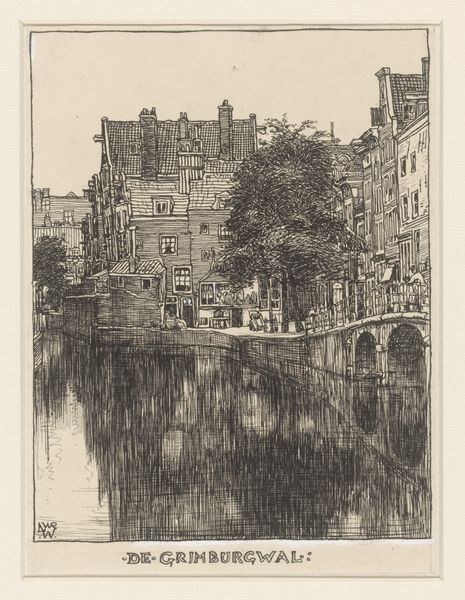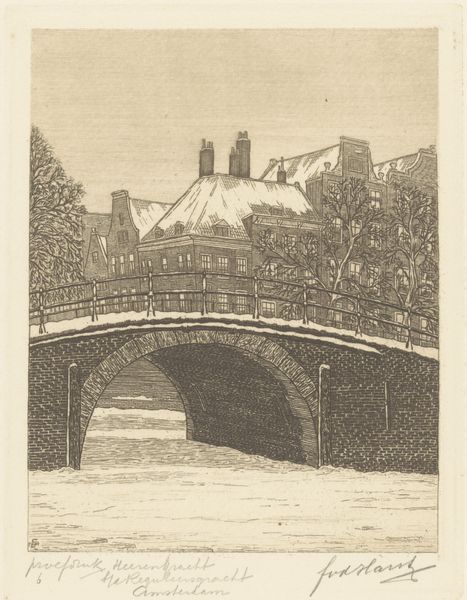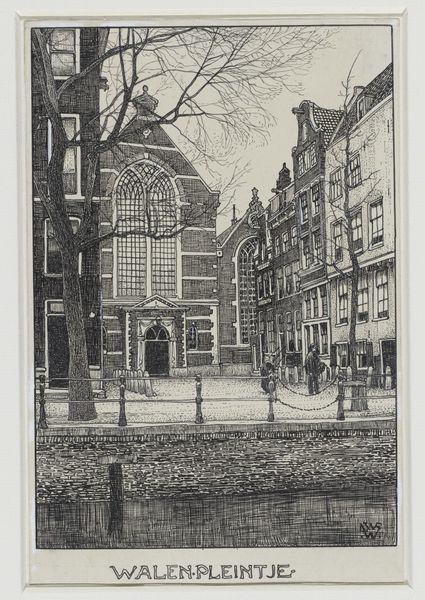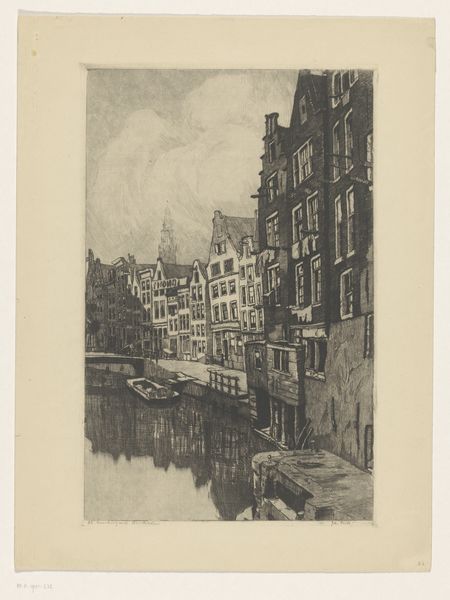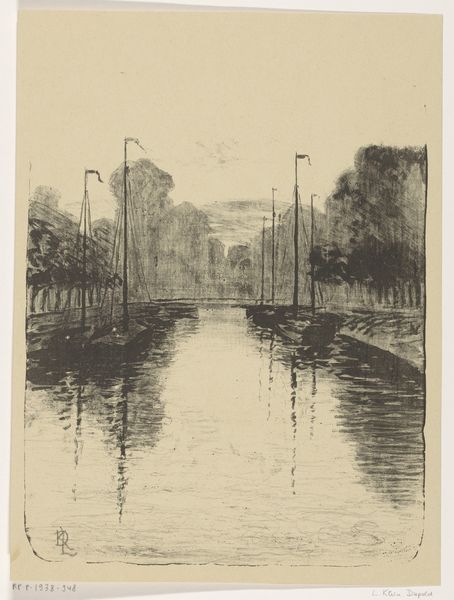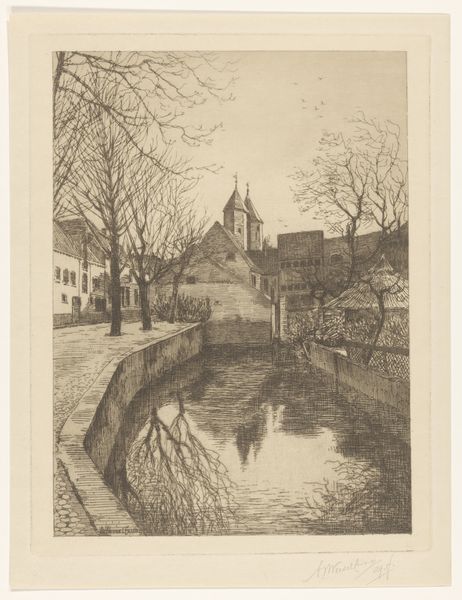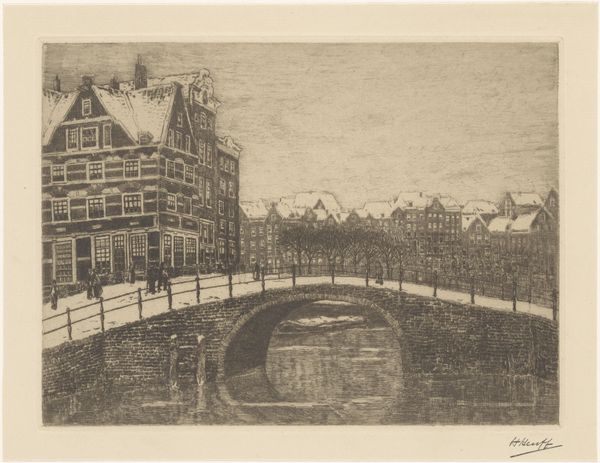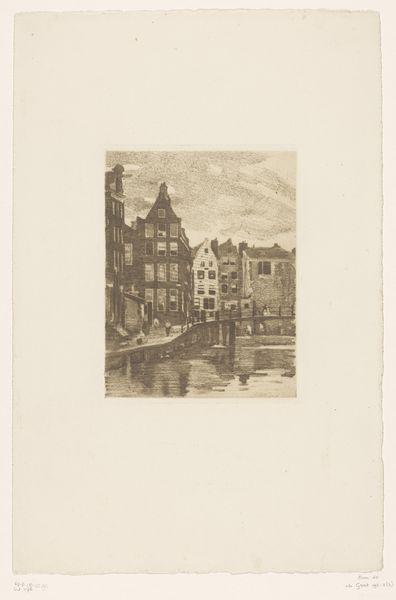
drawing, print, paper, ink
#
drawing
# print
#
old engraving style
#
traditional media
#
landscape
#
paper
#
ink
#
cityscape
#
street
#
realism
Dimensions: height 210 mm, width 120 mm
Copyright: Rijks Museum: Open Domain
Willem Wenckebach made this line drawing of the Blauw Burgwal in Amsterdam with pen and ink, sometime in the early 20th century. This image captures a quintessentially Dutch scene, reflecting the nation’s deep connection with its urban waterways. Wenckebach shows us a quiet corner of the city, a place for everyday life rather than grand displays of wealth or power. We see ordinary buildings and bare trees, their forms mirrored in the still canal water. Amsterdam, from the 17th century onwards, was dominated by its merchant class, who invested their wealth in art and architecture, as well as in the complex systems of canals that were crucial to trade. Wenckebach’s drawing style looks back to the Dutch masters of earlier centuries, while also echoing the contemporary interest in urban scenes shown by artists such as George Hendrik Breitner. To understand this drawing, we need to look at the social and economic history of Amsterdam, exploring archives, maps, and photographs from the period. In doing so, we reveal how a seemingly simple cityscape reflects the complex interplay of commerce, culture, and artistic tradition.
Comments
No comments
Be the first to comment and join the conversation on the ultimate creative platform.
